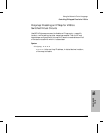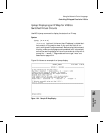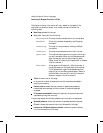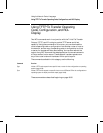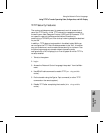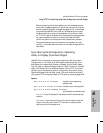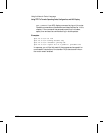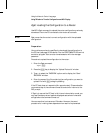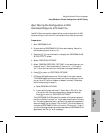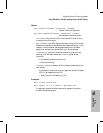
Before operating code is downloaded, you will be asked to enter
the current manager password if one exists, and to verify that you
want the operating system changed (see page 16-15). If download-
ing operating code fails, the router will be operating but most of
the protocols and circuits will be disabled; only the circuit used
for TFTP will remain enabled. After the operating code is success-
fully downloaded, the router burns the new code into ROM
(which may take five minutes) and then automatically reboots.
After downloading a new configuration is completed, you may
modify it. You must reboot the router for the new configuration to
take effect.
Fput: Storing the Configuration, Operating
Code, or Display Command Output
Use NCL’s Fput command to copy router operating code, the router’s
configuration, or the output of an NCL display command (Help, Time
and Date with no arguments, Summary, Browse, Config, Crash, Stamp,
Log, List, Get, or a command beginning with “Rget”) to a file on a remote
host or HP Router CR on an attached network, using TFTP. You cannot
use Fput to put the operating code or configuration on another router;
Fget must be used from the other router. The local router must have IP
routing and TFTP configured. See the TFTP security notes on page 16-94.
Syntax
fput X.X.X.X os filename transfer router operating
system code
fput X.X.X.X config filename transfer router configuration
fput X.X.X.X NCL-command filename
store display command output
X.X.X.X is the IP address of the remote node in dotted decimal
notation.
filename is the name of a file on the remote node to store the
output from this router. Some TFTP servers on remote nodes
require that the file already exist.
NCL
Commands
16
Using the Network Control Language
Using TFTP To Transfer Operating Code, Configuration, and NCL Display
16-95



